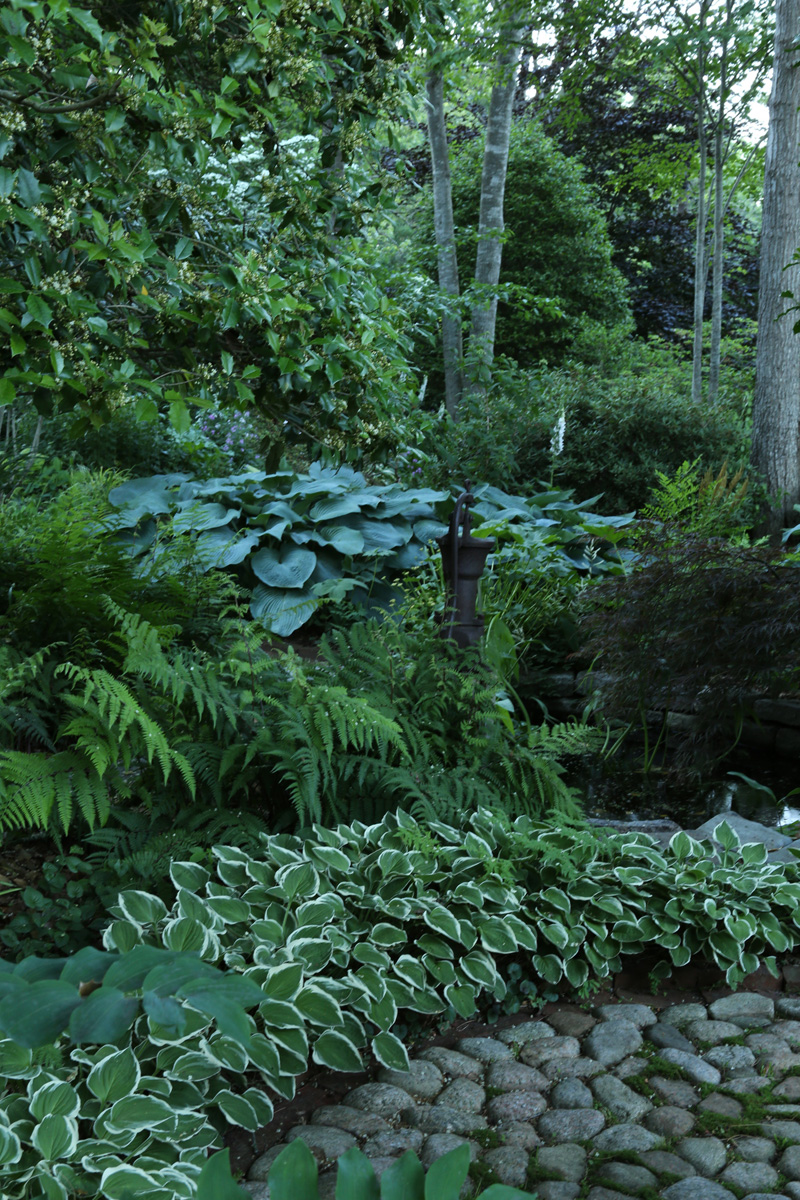Color is a powerful tool. By using it skillfully, you can make any size outdoor space visually impactful. Color can also be used to ensure our landscapes are more comfortable in both hot and cold weather. In addition, we can emphasize focal points and draw people to specific areas to warm up or cool down. Here are three ways color can help the Southern California garden (or anyplace that sees big temperature swings):
1. Use specific hues to warm the garden in winter and cool it in blazing summer
As we enter our coolest season in Southern California, landscapes near the ocean and at higher elevations start to develop a noticeable chill in the air while inland gardens, which have been roasting in the summer, catch a break from summer’s blazing heat. Unlike other parts of the country, the variable terrain can create remarkably different weather for various sections of SoCal. But autumn and winter lure all of us outdoors to plant, redesign, and simply enjoy the fresher, cleaner air. This is the perfect time to color your garden for beauty and comfort. Depending on your taste and location, you can make any part of your landscape better by turning the visual temperature up or down with color.
Cool colors like blues, purples, and some pinks bring to mind refreshing water, ice, and comfort, so should be used by those who enjoy lower temperatures. Hot colors like reds, oranges, and yellows reflect the warmth of our fiery sun, so these hues are best placed in the gardens of Southern Californians who want to warm up as winter arrives. By coordinating flowering times, a clever gardener can even design gardens to change color “temperatures” to mediate the seasonal changes.
Adding colorful nonliving materials like décor, gravel, tumbled glass, containers, and outdoor furniture can boost color effects (blues=cool; reds=warm) and impact ambient temperatures while reducing water needs and maintenance year-round. Physical temperature changes happen with color too. Darker shades absorb the sun’s heat, while lighter tones reflect it, so avoid dark material on walls that face full sun or walking surfaces with paved materials, especially where heat might be uncomfortable. Conversely, apply this concept to store heat in chilly spots for winter warmth.

2. Light up shady areas with variegated leaves and white or pastel blooms
Although our local SoCal climates offer less shade than many other parts of the country, north-facing exposures and sheltered areas are great opportunities to use white. White tends to wash out in full sun, but pops brilliantly where shade darkens the usual background of green leaves. White flowers, and leaves splashed with white, will stand out the most. But add some light tints of pink, peach, or pale yellow and the dreary shadows will brighten up. Illuminating these areas increases the appeal of the space and can entice visitors into lingering longer.

3. Mass bright colors to create impactful curb appeal or inviting, comfortable privacy
Using strong colors massed together is a powerful attention-getter. Consider using a variety of plants that all flower in a single color tone. You can increase the drama even more by adding foliage with colorful variegated leaves. Or create a celebration of diverse, bright colors intermingled in the same garden space.
Placing these powerful color punches in specific areas of the landscape can increase curb appeal or entice visitors toward a specific, more comfortable, part of the garden. Color is the ideal decorative tool for designing within our changing climate. Heat, drought, or cool breezes do not have to limit the imagination or beauty for any SoCal garden!
For more on designing with bold color, check out these articles:
Design a Garden with Bold Colors
Color Can Make or Break Your Garden
Find more information on Southwest gardening here.
—Jane Gates has more than 35 years of professional experience designing and gardening in Los Angeles and is the author of All the Garden’s a Stage: Choosing the Best Performing Plants for a Sustainable Garden.
Photos: Danielle Sherry


